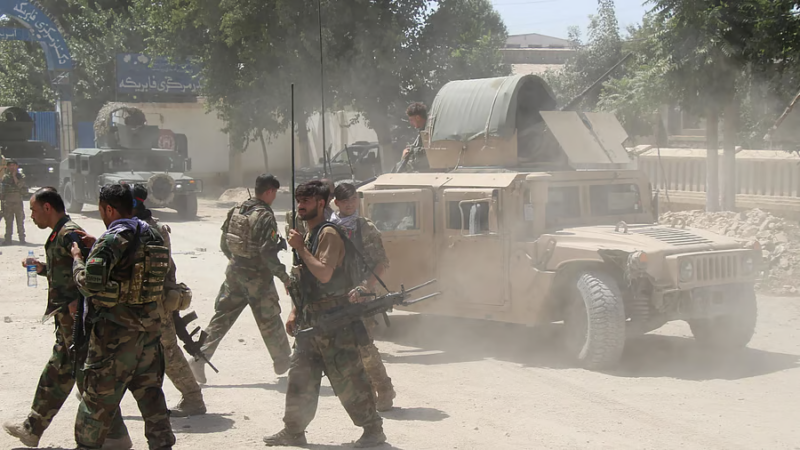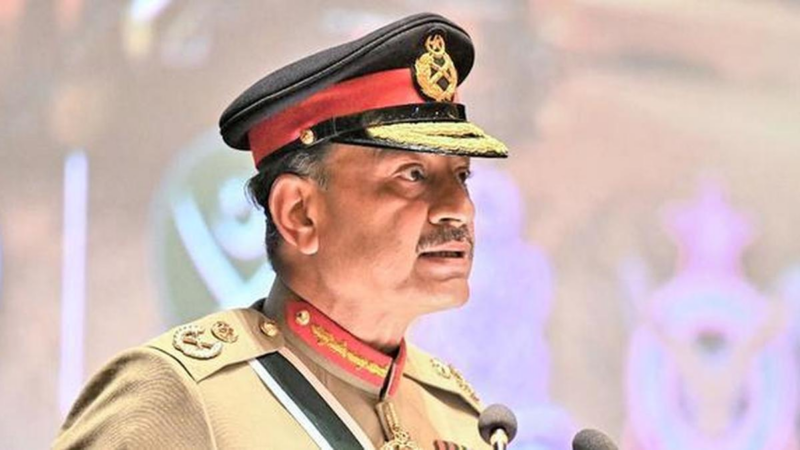Growing Militancy in Afghanistan and Pakistan Is More Than Just the Islamic State

There has been a wave of attacks across Pakistan in recent weeks by militant groups operating in the region that have widely varying objectives.
This week, a suicide attacker killed five Chinese nationals and their Pakistani driver in a convoy in Pakistan’s northwest. Pakistani Taliban, Tehreek-e-Taliban Pakistan, or TTP, is the usual suspect for such attacks in the northwest, but in a statement on Wednesday, it denied being behind targeting the Chinese workers.
Earlier, two suicide attacks in Pakistan’s restive Khyber Pakhtunkhwa province killed nine Pakistani troops in the third week of March.
In the southwest, militants carried out a brazen attack on Pakistan’s second-largest naval airbase and a port complex near the Arabian Sea in the volatile Balochistan province. The Pakistan army said two soldiers and 14 militants were killed in the attacks. Designated terrorist group Baloch Liberation Army, or BLA, accepted the responsibility.
The attacks by suspected regional militant groups came as the most active terrorist group in the region, Islamic State-Khorasan, was blamed by Washington for the attack in Moscow a week ago that killed more than 140 concert-goers.
“The recent surge in attacks is deeply concerning because it represents an escalation in militant tactics,” said Elizabeth Threlkeld, senior fellow and director for South Asian affairs at the Washington-based Stimson Center.
Who are the militant groups now active in the region, and what are their goals?
Islamic State-Khorasan, or IS-K, is leading the current wave of terror across the region.
The group was formed in 2015 by disgruntled Pakistani Taliban members. It considers itself a branch of the larger Islamic State, or IS, in what it calls the Khorasan, a reference to the historic region comprising parts of Afghanistan, Pakistan, Turkmenistan, Tajikistan, Uzbekistan and Iran.
IS-K, like its parent organization IS, is a Sunni organization. IS-K claims it is working to enforce Salafi sharia throughout its region of influence. The group opposes Shia Islam, and fighters have taken credit for hundreds of deaths of Shiites in Pakistan and Afghanistan in recent years.
A U.N. report last year in June said IS-K’s family members and fighters in the region number between 4,000 and 6,000.
“IS-K is attracting disgruntled militants from Taliban and members of the Tajikistan-based radical group Jama’at Ansarullah, Islamic Movement of Uzbekistan, East Turkistan Islamic Movement and those inspired by the Salafi ideology,” said Syed Fakhar Kakakhel, a Pashtun journalist in Pakistan who covers militancy in Afghanistan and Pakistan.
IS-K has not claimed responsibility for the attack in Moscow, but its statement in Pashto last Monday glorified the attackers. The 30-page statement was a fierce polemic against the ruling Taliban in Afghanistan, scolding them for their relations with the U.S., Russia, China and other countries.
IS-K has claimed responsibility, though, for two recent suicide attacks, one each in Afghanistan’s Kandahar city on March 21 and the suicide bombings on January 3 at the memorial services for the Iranian commander Qassem Soleimani in Kerman city, Iran. More than 100 people were killed in the latter attack. Soleimani was killed in a U.S. drone attack in Iraq in 2020.
Russian, Iranian and Afghan Taliban identified the attackers of Moscow, Kerman and Kandahar as nationals of Tajikistan.
Tehreek-e-Taliban Pakistan: umbrella syndicate of militants
Analysts say TTP has gotten smarter in its tactics, techniques, and weapons since the withdrawal of U.S.-led NATO forces from Afghanistan in August 2021. A U.N. report early this year said al-Qaida is conducting suicide bomber training to support TTP, a U.S.-designated terrorist group.
Kakakhel said TTP’s new strategy includes delegating powers to its proxies, adding sophisticated weapons such as M24 sniper rifles and M16A4 rifles with thermal scopes and night vision, along with targeted ambushes to its playbook.
“We had reported suicide attacks where a candidate came to press the button and blew himself off. But now, they fight for the last breath inflicting maximum casualties to forces and then pressing the button at the right time,” Kakakhel said.
“I assess the TTP’s threat to be more severe, especially as the TTP has sanctuary in Afghanistan and support of the Taliban. TTP also has a bigger fighting force,” said Asfandyar Mir, senior expert for South Asia with a focus on Afghanistan and Pakistan, at the Washington-based U.S. Institute for Peace.
The militants carried out 97 attacks in February this year and about 789 attacks last year in Pakistan alone, the highest since 2018, according to Islamabad-based Center for Research and Security Studies. Pakistani officials attribute a higher percentage of the attacks to the TTP or its proxies.
The Pakistan military and civilian government representatives engaged the TTP leadership in talks in 2021, but they couldn’t reach a deal. The government officials later said TTP wanted power in regions close to Afghanistan to impose their Sharia on the style of Afghan Taliban.
“Pakistani security forces should be commended for holding off attacks on Gwadar and Turbat naval station, but the broader challenge remains that the military and police are taking heavy losses across the western border region,” Elizabeth Threlkeld told VOA.
She said Pakistan’s leaders badly miscalculated in assuming a Taliban government in Kabul would support Pakistan’s interests. “As Pakistan seeks a way out of this difficult diplomatic and security challenge, it would benefit from conducting a thorough review of the analysis and decision-making that drove its Afghan policy for the past two decades to draw lessons going forward,” she said.
Balochistan: home for militant separatist groups
Baloch separatist groups, several of which are designated as terrorist groups by Britain and the United States, are largely secular but for nearly 20 years have been embroiled in an active insurgency against Pakistani troops. The feud started after the Pakistani army killed a prominent Baloch leader and former chief minister, Balochistan Akbar Bugti, in 2006.
As many as five known Baloch separatist groups are coordinating their attacks against Chinese-funded projects and Pakistani forces in the restive province under the banner of the “Baloch Raji Aajoi Sangar,” a Baloch name translated as Baloch National Freedom Movement.
The most lethal faction is the Majeed Brigade, a sub-group of the Baloch Liberation Army. The Majeed Brigade has accepted responsibilities for some of the lethal attacks on the Chinese nationals and Pakistani troops. Other Baloch separatist groups engaged in insurgency include Baloch Republican Army, Baloch Republican Guards, Baloch Liberation Front and Bashirzeb Baloch Group.
Balochistan-based analyst Syed Ali Shah said Baloch militants are different from Islamic militants: “In Balochistan, this is a political insurgency. They are not fighting for the implementation of Sharia; rather, [they fight] for greater control over Baloch coast and resources.”
Pakistani media has reported 11 major attacks on Chinese nationals and projects in Balochistan and other parts of the country since 2018. Most of these attacks were claimed by Baloch separatist groups.
Some analysts consider the Islamist militants a bigger threat for regional security because of their transnational presence and higher number of fighters. “As for the Baloch militants, they have been trying to target Chinese interests for several years now and are in no mood to relent,” said senior expert Mir.
He said he thinks Pakistan will probably continue to exert pressure on the Afghan Taliban to reduce the threat of both TTP and Baloch militants.






